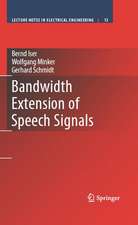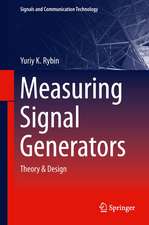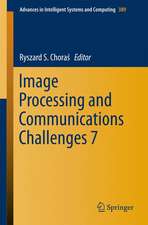Novel Techniques for Dialectal Arabic Speech Recognition
Autor Mohamed Elmahdy, Rainer Gruhn, Wolfgang Minkeren Limba Engleză Paperback – 13 apr 2014
In this book, Egyptian Colloquial Arabic (ECA) has been chosen as a typical Arabic dialect. ECA is the first ranked Arabic dialect in terms of number of speakers, and a high quality ECA speech corpus with accurate phonetic transcription has been collected. MSA acoustic models were trained using news broadcast speech. In order to cross-lingually use MSA in dialectal Arabic speech recognition, the authors have normalized the phoneme sets for MSA and ECA. After this normalization, they have applied state-of-the-art acoustic model adaptation techniques like Maximum Likelihood Linear Regression (MLLR) and Maximum A-Posteriori (MAP) to adapt existing phonemic MSA acoustic models with a small amount of dialectal ECA speech data. Speech recognition results indicate a significant increase in recognition accuracy compared to a baseline model trained with only ECA data.
| Toate formatele și edițiile | Preț | Express |
|---|---|---|
| Paperback (1) | 632.55 lei 6-8 săpt. | |
| Springer – 13 apr 2014 | 632.55 lei 6-8 săpt. | |
| Hardback (1) | 638.57 lei 6-8 săpt. | |
| Springer – 12 feb 2012 | 638.57 lei 6-8 săpt. |
Preț: 632.55 lei
Preț vechi: 744.18 lei
-15% Nou
Puncte Express: 949
Preț estimativ în valută:
121.04€ • 129.43$ • 100.92£
121.04€ • 129.43$ • 100.92£
Carte tipărită la comandă
Livrare economică 18 aprilie-02 mai
Preluare comenzi: 021 569.72.76
Specificații
ISBN-13: 9781489999450
ISBN-10: 1489999450
Pagini: 132
Ilustrații: XXII, 110 p.
Dimensiuni: 155 x 235 x 7 mm
Greutate: 0.2 kg
Ediția:2012
Editura: Springer
Colecția Springer
Locul publicării:New York, NY, United States
ISBN-10: 1489999450
Pagini: 132
Ilustrații: XXII, 110 p.
Dimensiuni: 155 x 235 x 7 mm
Greutate: 0.2 kg
Ediția:2012
Editura: Springer
Colecția Springer
Locul publicării:New York, NY, United States
Public țintă
ResearchCuprins
Fundamentals.- Speech Corpora.- Phonemic Acoustic Modeling.- Graphemic Acoustic Modeling.- Phonetic Transcription Using the Arabic Chat Alphabet.
Textul de pe ultima copertă
Novel Techniques for Dialectal Arabic Speech describes approaches to improve automatic speech recognition for dialectal Arabic. Since speech resources for dialectal Arabic speech recognition are very sparse, the authors describe how existing Modern Standard Arabic (MSA) speech data can be applied to dialectal Arabic speech recognition, while assuming that MSA is always a second language for all Arabic speakers.
In this book, Egyptian Colloquial Arabic (ECA) has been chosen as a typical Arabic dialect. ECA is the first ranked Arabic dialect in terms of number of speakers, and a high quality ECA speech corpus with accurate phonetic transcription has been collected. MSA acoustic models were trained using news broadcast speech. In order to cross-lingually use MSA in dialectal Arabic speech recognition, the authors have normalized the phoneme sets for MSA and ECA. After this normalization, they have applied state-of-the-art acoustic model adaptation techniques like Maximum Likelihood Linear Regression (MLLR) and Maximum A-Posteriori (MAP) to adapt existing phonemic MSA acoustic models with a small amount of dialectal ECA speech data. Speech recognition results indicate a significant increase in recognition accuracy compared to a baseline model trained with only ECA data.
In this book, Egyptian Colloquial Arabic (ECA) has been chosen as a typical Arabic dialect. ECA is the first ranked Arabic dialect in terms of number of speakers, and a high quality ECA speech corpus with accurate phonetic transcription has been collected. MSA acoustic models were trained using news broadcast speech. In order to cross-lingually use MSA in dialectal Arabic speech recognition, the authors have normalized the phoneme sets for MSA and ECA. After this normalization, they have applied state-of-the-art acoustic model adaptation techniques like Maximum Likelihood Linear Regression (MLLR) and Maximum A-Posteriori (MAP) to adapt existing phonemic MSA acoustic models with a small amount of dialectal ECA speech data. Speech recognition results indicate a significant increase in recognition accuracy compared to a baseline model trained with only ECA data.
Caracteristici
Presents novel approaches that overcome the major problems in dialectal Arabic speech recognition Investigates how to benefit from existing standard Arabic speech resources to improve speech recognition accuracy for dialectal Arabic Explains in detail how the proposed approaches have been evaluated against conventional speech recognition techniques Includes supplementary material: sn.pub/extras


























